|
The
wines of Duorum, Douro, Portugal
Website: www.duorum.pt
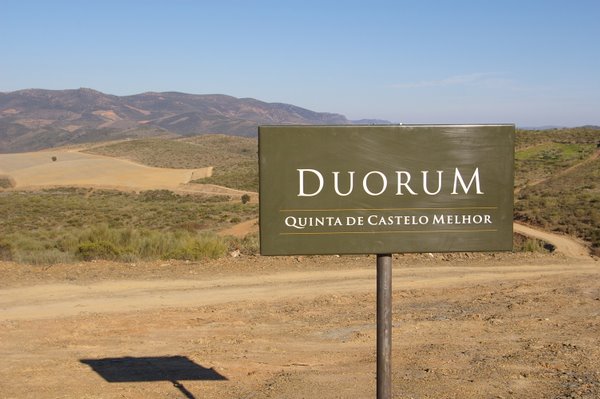
Duorum is latin for ‘from two’.
It’s a joint project between two of Portugal’s best known
oenologists, João Portugal Ramos and Jose Maria Soares Franco.
Ramos is the king of the Alentejo—a consultant winemaker turned
winegrower whose own estate has grown to be one of the largest
private companies in the region, and who has also started a sizeable
operation, Falua, in the Ribatejo. Soares Franco was for 27 years
the custodian of Barca Velha, the famous Douro wine that is now part
of the Sogrape stable.
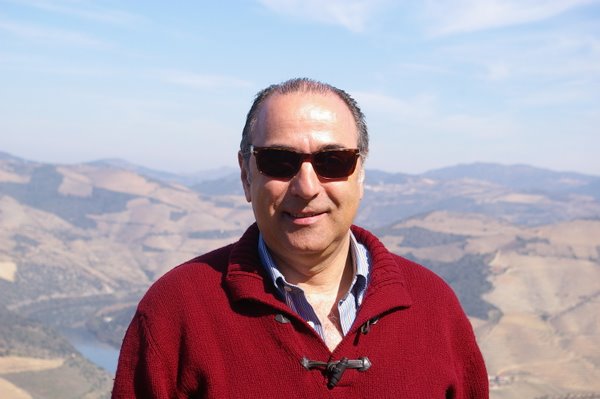
Jose
Maria Soares Franco
For a while, there has been an
obvious gap in the Ramos portfolio of wines: the Douro. But now he
has filled that by entering into this partnership with Soares
Franco. I visited in
March to see how the new venture was progressing.
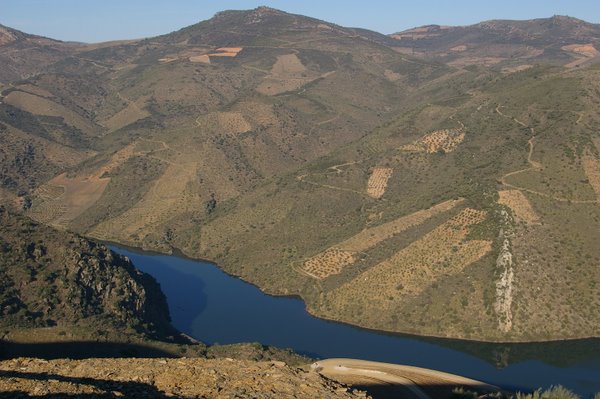
As well as two famous oenologists,
the ‘from two’ also refers to the fact that the wine is a blend
from two rather different parts of the Douro. On the one hand,
Duorum is renting two old vineyards and buying from a further
15–18 growers in the Cima Corgo; on the other, the Douro Superior,
further up river towards the Spanish border. Currently, the Douro
Superior vineyards are rented, but Duorum have also purchased 150
hectares—from some 60 different owners—which is being converted
into a spectacular Quinta, called Castelo Melhor.
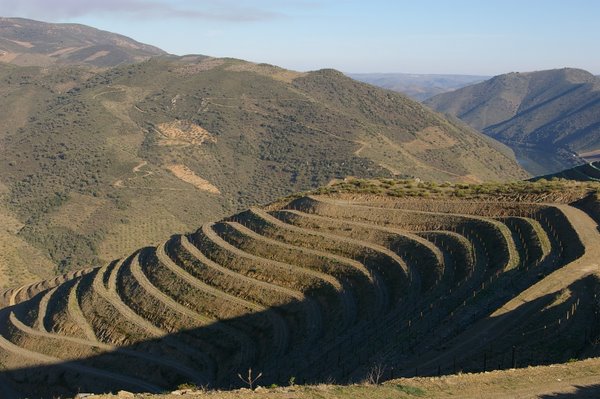
Castelo Melhor is an incredible
project. It was extremely difficult to negotiate with so many land
owners, but the results are worth it, because Duorum now have a
wonderful property that extends all the way down to the river bank.
While the Douro Superior is generally flatter than the Cima Corgo
and Baixo Corgo, this section has very steep slopes.
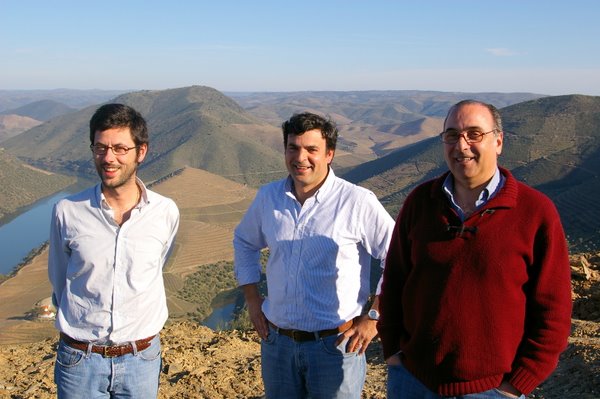
Jose Luis, Joao and Jose Maria
I visited with the three people in
charge of the project: José Maria Soares Franco, winemaker José Luís
Moreira da Silva and viticulturalist João Perry Vidal. We made the
perilous journey from the top of the new Quinta to the banks of the
river, looking at the progress being made with the new vineyard
development. Eventually, a new winery will be built on the site.
This is no small undertaking: the cost of installing a pipeline to
bring water from the river to the top of the property was a
staggering €500 000.
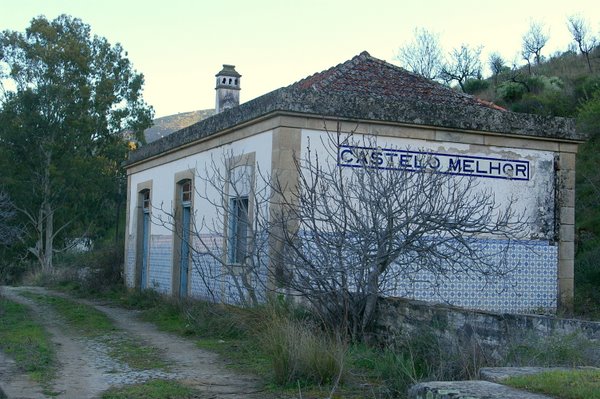
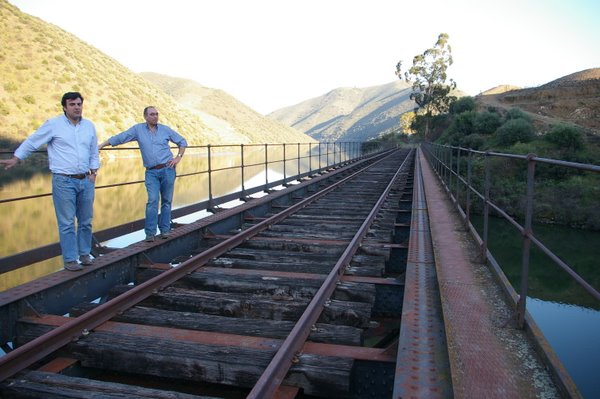
We also looked at the abandoned
railway track and station on the property. The journey from this
station to anywhere would have been an arduous one. People were made
of stern stuff in those days.
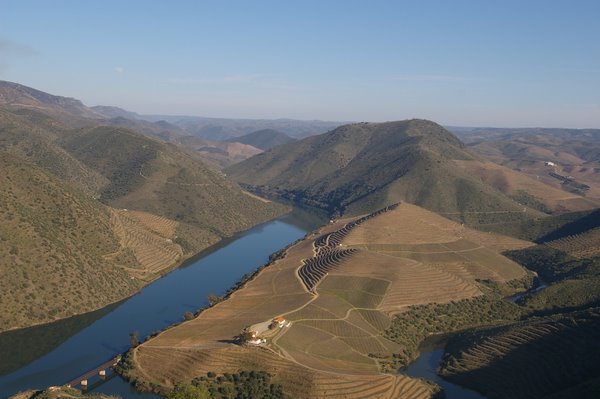
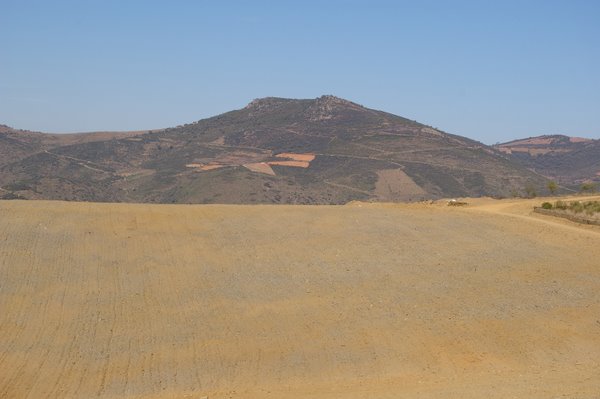
Currently it is not expensive for
Duorum to buy grapes from the Cima Corgo, even though the cost of
buying vineyards here is very high, and Port grapes (with the permit
to make Port, called the beneficio)
are quite expensive. Grapes from good vineyards can be had for
60–70 cents/kg (but are often sold for much less – 30–35
cents/kg). In future, these prices are likely to rise because it
isn’t possible to take good care of the vineyards with revenues so
low. Duorum is particularly interested in grapes from old vineyards
at high altitudes (400 m).
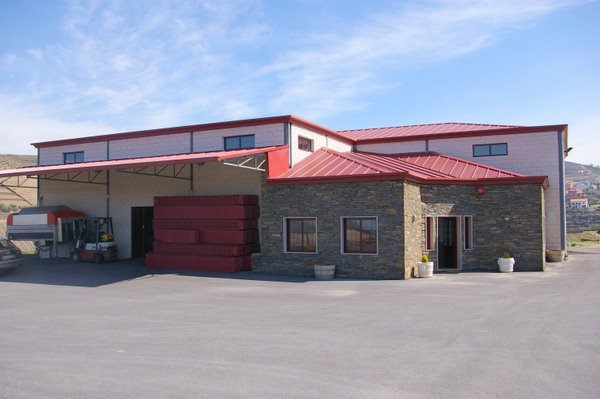
They have rented a small winery,
which they have kitted out with state of the art equipment. This is
important, because it allows them to take care of each lot of grapes
vat by vat. Current capacity is around 400 tons.
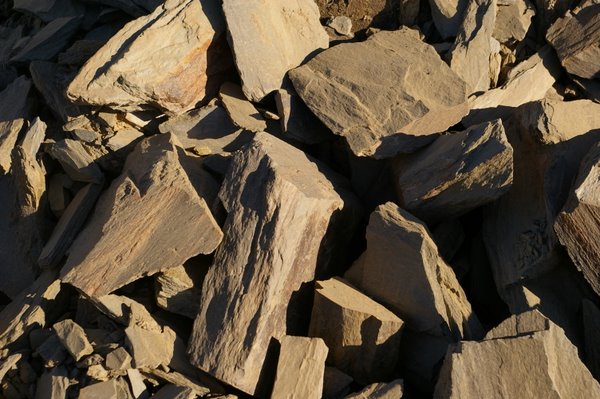
Grapes are hand-picked into small
cases, and everything is destemmed except for grapes destined for
Port that have good maturity in the stems. The fermentations take
place in stainless steel lagars; initially, temperatures are kept
low for 1–3 days at 8–12 °C. Punch down takes place three times
a day, and the grapes are naturally at pH 3.6–3.7, so little if
any acid adjustment is needed.
The Duorum project is really
impressive, and the early wines being made are spot on. They avoid
two of the slightly worrying trends of the new wave Douro wine:
over-ripeness, and greedy pricing. These wines show lovely
definition, structure and personality.
Duorum
Colhieta 2007
Lovely
focused dark fruits nose with sweet dark cherry and blackberry
characters, as well as a bit of spice and a hint of tarriness. The
palate is fresh and structured with lovely fruit purity and some
chocolatey notes. Very stylish: rich but structured, with sweet
fruit but also some savouriness. This will be c. £12 in the UK;
retail is €9 in Portugal. Production 150 000 bottles. 91/100
Cask samples of reserve wines:
Lote
A 2007
Dark,
intense spicy nose with taut black fruits and complex, subtle tarry
notes. The palate is concentrated but fresh with intense structured
fruit. Taut and quite savoury, with lots of tannic structure and
good acidity. Not as rich as you’d expect: does the mid-palate
need a bit of beefing up? A serious effort. 92–94/100
Lote
B 2007
Very
rich and chocolatey on the nose, with sweet, intense, brooding dark
fruits. The palate has a strong oak imprint with lovely freshness
and good acidity. Lovely freshness and purity, with great
concentration. 92–94/100
Retasted from fresher samples at the
Falua winery, 2 days later:
Lote
A 2007
Fresh,
perfumed, sweet and vibrant on the nose showing blackcurrant and
blackberry as well as dark cherry fruit. The palate is fresh with
good acidity and elegant focused fruit. Real precision here with
good structure. 92–95/100
Lote
B 2007
Deep
coloured. Wonderful aromatic nose showing dark fruits, spice and
complexity. The palate shows some tarry oak but also lovely taut,
intense, structured savoury fruit. Very bold and intense with firm
plum and dark cherry fruits, backed up by spicy tannins. 92–95/100
2008 vintage cask samples:
W – old vineyard mixed blend from
the Cima Corgo. This has lovely expressive aromatics. It’s really
fresh, with pure fruit: alluring and fruity.
TF – Touriga Franca from the Cima
Corgo. Slightly reduced by lovely focused sweet fruit here. Good
structure and beautiful purity.
TN – Touriga Nacional from the
Cima Corgo and Douro Superior. Lovely floral aromatics showing rich
dark fruits on the nose. The palate is fresh and expressive. Well
defined with lovely focus and good acidity.
Sousão and Touriga Nacional –
dense, chocolatey and rich with lovely acidity and tannic structure.
This is an immense wine with incredible structure and intensity.
Remarkable.
S2 + press wine – incredible
density and structure with new oak showing. Very dense, structured
and tannic with great presence.
It seems that while 2007 is a very
good vintage, 2008 may turn out even better here than 2007. It seems
to have delivered some great blending components with different
personalities.
Ports
2007
LBV (called ‘Reserve’)
7000
litres made. Beautifully expressive and aromatic with lovely fruit
quality. Bright, focused, dark cherry and spice characters dominate.
Very pure. 89–92
Vintage
Port 2007
Wonderfully
expressive with dense structure under the concentrated dark fruits.
Lively violetty dark cherry aromatics. Really lovely wine that’s
beautifully expressive. 93–94/100
These are new style Ports, focusing
on elegance and not too much aggressive tannin extraction from the
grapes. They are Ports that should drink well in their relative
youth. The fruit expression is beautiful.
A
short film of the visit:
Wines tasted 03/09
Find these wines with wine-searcher.com
Back
to top
|

